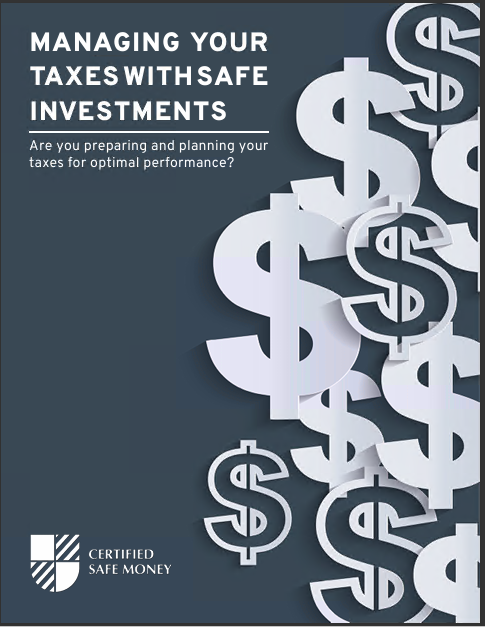Key Takeaways
-
Indexed Universal Life (IUL) offers flexible premiums and potential growth linked to market indices, while Whole Life guarantees fixed premiums, cash value, and death benefits.
-
Whole Life insurance provides consistent returns and dividends, whereas IUL allows variable growth with capped upside potential and downside protection.
Flexibility vs. Stability: Which Fits Your Lifestyle?
When you’re thinking about life insurance, it’s essential to find a plan that matches your lifestyle and financial goals. Indexed Universal Life (IUL) and Whole Life policies are two popular choices, but they’re fundamentally different. Understanding these differences now, in 2025, can help you choose wisely for long-term financial security.
Premium Payments: Adjustable or Fixed?
One of the most noticeable differences between IUL and Whole Life is how you pay your premiums.
IUL: Premium payments are flexible. You can adjust how much you pay and when, within certain limits. If your income varies or you anticipate future financial shifts, IUL might fit your lifestyle well.
Whole Life: Premium payments are fixed and consistent throughout your life. You pay a set amount regularly, which never changes. This predictability can be comforting, especially if you prefer knowing exactly what your expenses will be decades into the future.
If you’re looking for more financial flexibility now and in the future, IUL might be appealing. However, if stable, predictable payments align better with your planning, Whole Life could be the better match.
Cash Value Growth: Market-Linked Potential or Guaranteed Growth?
Another major difference is how your policy’s cash value accumulates over time.
IUL: Your cash value growth depends on market performance, typically tracking popular indices like the S&P 500. There’s potential for higher returns if markets perform well, but your gains are capped to balance risk. Crucially, there’s also downside protection, meaning your cash value won’t drop below a certain point, even if the market falls.
Whole Life: Offers guaranteed cash value growth with fixed, predictable returns. While it may not provide high, market-linked returns, you know exactly how your policy will perform. Many Whole Life policies also pay dividends, further boosting your growth over the long term.
If the excitement of market potential appeals to you—and you’re comfortable with some variability—IUL might suit you. But if you favor certainty, Whole Life’s guaranteed returns could provide valuable peace of mind.
Death Benefit: Flexible Adjustments or Guaranteed Stability?
The death benefit is often the core reason people buy life insurance. But the nature of your death benefit can vary significantly depending on the policy type.
IUL: Often offers flexibility in adjusting the death benefit. You can increase or decrease it based on your evolving needs. If your family’s financial needs or obligations shift over the years—such as after paying off your mortgage or when children become independent—IUL can adapt.
Whole Life: The death benefit is fixed and guaranteed. The amount your beneficiaries will receive upon your passing doesn’t change, provided premiums are paid. This stability can help you plan long-term financial goals, knowing exactly how much your family will receive.
Ask yourself: Do you prefer flexibility that adapts to your life’s changes, or would you rather ensure your loved ones receive a predetermined benefit?
Risk vs. Security: Balancing Your Investment Comfort Zone
Investments always come with some level of risk, but the way risk affects your policy varies greatly between these two life insurance types.
IUL: There’s an inherent market risk due to its index-linked nature. Although your cash value has downside protection, returns can fluctuate significantly depending on market performance. You’ll never lose money due to market downturns, but you might earn little to no interest during poor-performing periods.
Whole Life: Carries minimal investment risk. Your returns are stable, predictable, and often supplemented by dividends. Although your growth may seem modest compared to market-linked options, you’re insulated from market volatility.
If you’re comfortable with moderate risk for potentially higher rewards, an IUL may be appealing. However, if market swings make you anxious, Whole Life’s stable returns might be more your speed.
Access to Cash: How Easily Can You Use Your Money?
Life insurance policies often double as savings tools, allowing you access to accumulated cash value. But the ease and terms of accessing your cash vary widely.
IUL: You can generally access your cash value through loans or withdrawals. However, the amount available and fees involved depend on your policy’s specifics and performance. Withdrawals or loans from your policy could impact your death benefit.
Whole Life: Also allows policy loans and withdrawals, typically with simpler, clearer terms and lower impact on your long-term policy performance. Access to cash is often straightforward and predictable, which can be beneficial if unexpected financial needs arise.
Evaluate how important it is to quickly access your money. If you anticipate frequent or significant withdrawals, Whole Life may offer a clearer structure. If you’re looking at long-term accumulation with occasional access, IUL can be suitable.
Making Sense of Your Options
Choosing between Indexed Universal Life and Whole Life insurance involves balancing flexibility, risk tolerance, guaranteed returns, and cash accessibility. While both policies offer valuable protection and savings features, your personal financial goals and comfort with uncertainty will heavily influence your decision.
Take a moment in 2025 to reflect on what your financial landscape might look like in 10, 20, or even 30 years. Aligning your policy choice with your vision for the future can ensure your life insurance doesn’t just offer protection—it supports your overall financial journey.
Think carefully about what matters most to you now and in the coming decades: flexibility versus stability, potential growth versus guaranteed returns, adjustable benefits versus fixed assurances, manageable risk versus absolute security, and easy cash access versus structured withdrawals.
By understanding these five critical differences, you can confidently choose the life insurance policy that best fits your unique financial picture.
Take Charge of Your Financial Future
Your decision between Indexed Universal Life and Whole Life insurance isn’t simply about protecting loved ones—it’s about strategically shaping your financial future. Consider your priorities carefully, revisit these differences, and speak with a trusted financial professional to help you navigate your next steps.
When you’re clear about what matters most, your choice of life insurance becomes more than a safety net—it becomes a vital part of your overall financial strategy.











